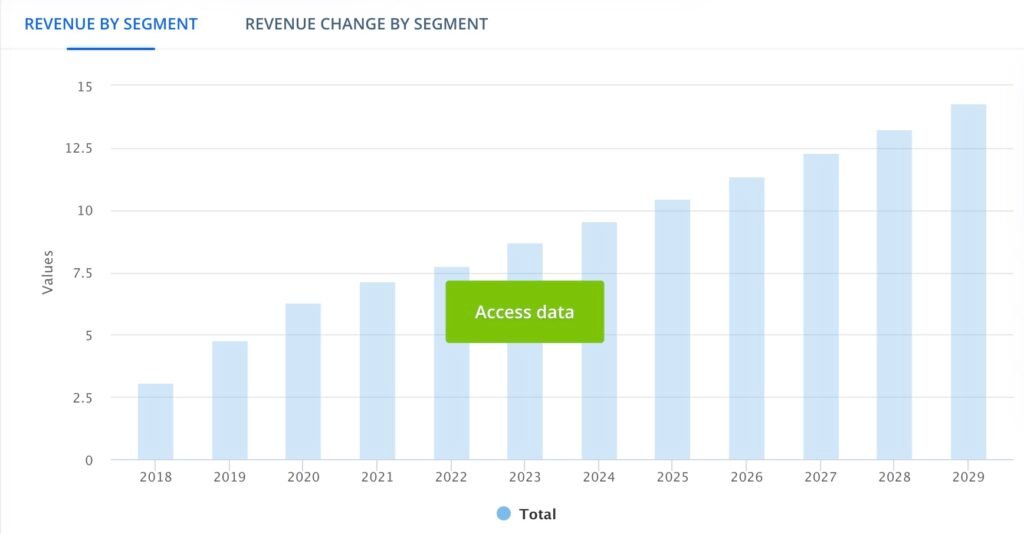The air fryer market has experienced significant growth in recent years, driven by increasing consumer demand for healthier cooking alternatives and energy-efficient kitchen appliances. This article provides a comprehensive analysis of the current market trends, growth projections, and consumer behaviors shaping the air fryer industry.
Market Overview
As of 2023, the global air fryer market was valued at approximately USD 1.22 billion and is projected to grow at a compound annual growth rate (CAGR) of 7.9% from 2024 to 2030.

This growth is attributed to rising health consciousness among consumers and the increasing adoption of convenient cooking solutions.
Production and Revenue Statistics
The production volume of air fryers has surged to meet escalating consumer demand. In 2023, the market size was valued at USD 1 billion, with expectations to reach USD 1.9 billion by 2032, reflecting a CAGR of 7.4% between 2024 and 2032.


Pricing Trends
The average price per unit of air fryers is expected to reach $91.12 by 2029, indicating a trend towards more affordable options as market competition intensifies.
Consumer Adoption and Usage
Air fryers have become a staple in many households, particularly for preparing popular foods like chips, with 73% of U.K. responair fryers for this purpose. The convenience and perceived health benefits are significant factors driving this adoption.
Energy Efficiency and Cost Savings
A notable advantage of airnergy efficiency. In the U.K., over half of the households owning an air fryer (53%) cite cost-efficiency as a significant reason for their purchase, highlighting that air fryers are cheaper to run than traditional ovens.
Technological Innovations
The market has seen advancements such as Wi-Fi and Bluetooth-enabled air fryers, enhancing user convenience through remote controlpabilities. These smart features cater to the growing consumer demand for connected home appliances.
Market Challenges

Despite their popularity, some consumers face obstacles to air fryer ownership, including concerns about kitchen space and the learning curve associated with new cooking methods. Manufacturers are addressing these issues by developing more compact and user-friendly models.
Future Outlook
The air fryer market is poised for continued growth, with projections indicating a market volume of USD 10.35 billion worldwide by 2029, growing at a rate of 10.16% from 2024 to 2029.

Statista This expansion is expected to be driven by ongoing product innovations and increasing consumer awareness of healthy cooking practices.
Conclusion
The air fryer market is experiencing robust growth, propelled by health-conscious consumers seeking convenient and energy-efficient cooking solutions. With continuous technological advancements and a focus on affordability, the market is set to expand further, offering diverse options to meet evolving consumer preferences.
FAQs
- What is the current size of the global air fryer market? As of 2023, the global air fryer market was valued at approximately USD 1.22 billion.
- What is driving the growth of the air fryer market? The market growth is driven by increasing health consciousness among consumers and the demand for convenient, energy-efficient cooking appliances.
- How energy-efficient are air fryers compared to traditional ovens? Air fryers are generally more energy-efficient, with many users reporting lower energy bills and faster cooking times compared to traditional ovens.
- What are some popular foods cooked in air fryers? Common foods include chips, chicken, and various baked goods, with chips being the most popular among U.K. users.
- What technological advancements are present in modern air fryers? Modern air fryers feature innovations like Wi-Fi and Bluetooth connectivity, allowing for remote control and monitoring via smartphones.
Internal Linking Opportunities:
- Link to articles on “Top 10 Healthy Recipes for Your Air Fryer” and “Energy-Efficient Kitchen Appliances: A Comprehensive Guide” to provide readers with practical applications and broader context.
External Authoritative Sources:



